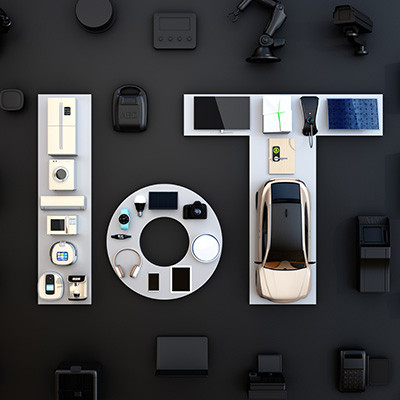The entire purpose of modern IT is to improve the processes that work requires us to do. Today, we wanted to address a few business priorities—productivity, cybersecurity, and accessibility—that the right tech can help you accomplish, explicitly exploring how different tools can contribute to your success.
Network Synergy Blog
In business, innovation and productivity go hand-in-hand. When you think outside the box, you open up new ways to get things done faster, smarter, and more effectively. In this month’s newsletter, we thought we’d discuss five innovative strategies to help your business reach new levels of productivity.
In recent years, artificial intelligence (AI) has emerged as a powerful tool that can revolutionize small businesses. With its ability to analyze vast amounts of data and make intelligent decisions, AI has the potential to streamline operations, improve customer service, and drive growth. Let’s explore some practical applications of AI that can benefit small businesses and help them thrive in today's competitive landscape.
We’re at a weird point in the technology world (but honestly, when is it not at least a little convoluted?). Right now, modern technology has been slowly shifting between a few different technologies and consumers and businesses are stuck in the middle trying to figure out what to do and how to future-proof their hardware investments.
So, you’re looking to improve your business’ technology…that’s great! More effective solutions are critical to helping boost your success. However, it is important to acknowledge that these kinds of initiatives don’t always have the greatest record of success. Let’s examine why this is, and critically, what can be done about it.
The business world is always ebbing and flowing with new concepts, ideas, and strategies in the attempt to innovate. The more technology can be used to do things that help a business run, the more processes can be automated bringing a layer of efficiency that isn’t possible without it. Let’s take a brief look at some of the technology trends that small businesses will be confronted with in 2023.
You’ve probably heard of augmented reality by now. If you are a fan of sports on TV, especially. Every time your favorite team faces a 4th and 1, the lines that you may take for granted on the field is AR. It augments the image with overlays of information that makes what you are looking at more immersive. As businesses continue to evolve, integrating augmented reality can be a game-changer. Let's explore four compelling ways in which augmented reality can work wonders for businesses.
Your business’ data holds incredible potential for helping you improve operations, but only when it is leveraged properly. To this end, you have to identify specific metrics that you are working toward and establish how these metrics are helping you make strides forward. IT offers plenty of metrics to help you make better decisions about operational efficiency.
A digital twin could arguably be seen as a somewhat niche technological innovation. Regardless, they are an invaluable resource to quite a few industries that help the businesses that use them optimize their processes. Let’s go over what a digital twin is, and how it helps a few different business types meet their needs.
Information technology has become a ubiquitous tool employed by almost every organization. The ability to adapt and improve operations has become critical for maximizing productivity and creating an environment conducive to success. The pursuit of innovation, however, often considered essential, may actually hinder productivity. This month, we explore how blindly innovating might not always be the optimal path for steering your business toward success.
Happy New Year! It’s officially that time when we all make resolutions meant to help improve ourselves, so why not include your business? Better yet, why not make business resolutions that you’re more likely to keep?
Let’s explore some of the ways that you can design your business’ resolutions to maximize the likelihood that you’ll keep them and benefit from them in the long term.
The workplace has undergone a dramatic shift over the past several years in favor of remote work, due in no small part to worldwide circumstances. In fact, many workers who would prefer to work in-office found themselves unable to, pushing the button on the topic of remote work even more. While there are some outspoken companies that want to see the return of in-office work, experts in the industry seem to be of the opposite opinion.
With things like cryptocurrencies and NFTs flooding the public awareness, the term “blockchain” has been brought up more than a few times. However, this association hardly covers what the blockchain is or what it is capable of.
Let’s briefly review what the blockchain really is, and what the technology can do.
When it comes to security, it can be challenging to keep up with shifting best practices. For instance, the use of a virtual private network has long been a staple to secure remote operations, and any decent IT service provider would recommend its use. However, this advice is changing with the growth of zero-trust access protocols.
Artificial intelligence, or AI, is just one way of describing the concept of machine learning technologies. AI has grown considerably over the past couple of years, so much that automation as we know it today wouldn’t exist without it. Throw in some data-driven insights and you have a technology that has cemented itself for use in a business environment, but there are some concerns with how fast it is growing and evolving.
Artificial intelligence is a hot-button issue in today’s business technology landscape, and for good reason. It’s being implemented in various software tools and platforms with mixed results. There are some concerns over it, particularly in regard to intellectual property, but there are also major issues with it related to “the profound risks to society and humanity,” according to an open letter.
Small manufacturers and distributors operate under a whole separate set of conditions than their larger competitors. This is because they don’t have the available capital to have any noticeable inefficiencies, and if they do have some, they are going to definitely affect their ability to compete. One solution that these organizations can lean on is a logistics platform.
Smartphones are everywhere. Nearly everyone has one either in their pocket or in their hand and that fact would make you think that the underlying smartphone market is one that is remarkably strong. This really isn’t the case. Today, we’ll take a brief look at the smartphone market and how a lack of true innovation is one of the reasons the industry has seen large decreases in sales.
There has been a lot made about the Internet of Things (IoT) recently. The IoT is basically technology that connects to the Internet or your network and offers some sort of specialized task. Think smart light bulbs, mobile devices, monitoring tools, and other appliances that traditionally aren’t connected to the Internet. For today’s businesses this can bring several pros and cons to the table. This month, we thought we would take a brief look at some of the pros and cons of deploying IoT technology in the workplace.

















